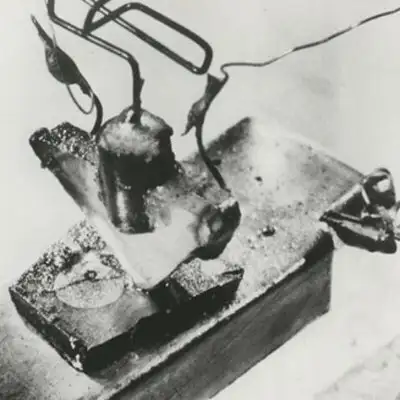Material Science with Houlong Zhuang at Q2B Paris
Download MP3In this special solo episode recorded at Q2B Paris 2024, Sebastian talks with Houlong Zhuang, assistant professor at Arizona State University, about his work in material science.
- Dr. Zhuang discusses his research on using quantum computing and machine learning to simulate high entropy alloy materials. The goal is to efficiently predict material properties and discover new material compositions.
- Density functional theory (DFT) is a commonly used classical computational method for materials simulations. However, it struggles with strongly correlated electronic states. Quantum computers have the potential to efficiently simulate these challenging quantum interactions.
- The research uses classical machine learning models trained on experimental data to narrow down the vast combinatorial space of possible high entropy alloy compositions to a smaller set of promising candidates. This is an important screening step.
- Quantum machine learning and quantum simulation are then proposed to further refine the predictions and simulate the quantum interactions in the materials more accurately than classical DFT. This may enable prediction of properties like stability and elastic constants.
- Key challenges include the high dimensionality of the material composition space and the noise/errors in current quantum hardware. Hybrid quantum-classical algorithms leveraging the strengths of both are a promising near-term approach.
- Ultimately, the vision is to enable inverse design - using the models to discover tailored material compositions with desired properties, potentially reducing experimental trial-and-error. This requires highly accurate, explainable models.
- In the near-term, quantum advantage may be realized for specific local properties or excited states leveraging locality of interactions. Fully fault-tolerant quantum computers are likely needed for complete replacement of classical DFT.
- Continued development of techniques like compact mappings, efficient quantum circuit compilations, active learning, and quantum embeddings of local strongly correlated regions will be key to advancing practical quantum simulation of realistic materials.
In summary, strategically combining machine learning, quantum computing, and domain knowledge of materials is a promising path to accelerating materials discovery, but significant research challenges remain to be overcome through improved algorithms and hardware. A hybrid paradigm will likely be optimal in the coming years.
Some of Dr. Zhuang's papers include:
Some of Dr. Zhuang's papers include:
Quantum machine-learning phase prediction of high-entropy alloys
Sudoku-inspired high-Shannon-entropy alloys
Machine-learning phase prediction of high-entropy alloys
Creators and Guests

Composer
Omar Costa Hamido
OCH is a performer, composer, and technologist, working primarily in multimedia and improvisation. His current research is on quantum computing and music composition, telematics, and multimedia. He is passionate about emerging technology, cinema, teaching, and performing new works. He earned his PhD in Integrated Composition, Improvisation and Technology at University of California, Irvine with his research project Adventures in Quantumland (quantumland.art). He also earned his MA in Music Theory and Composition at ESMAE-IPP Portugal with his research on the relations between music and painting. In recent years, his work has been recognized with grants and awards from MSCA, Fulbright, Fundação para a Ciência e a Tecnologia, Medici, Beall Center for Art+Technology, and IBM.


